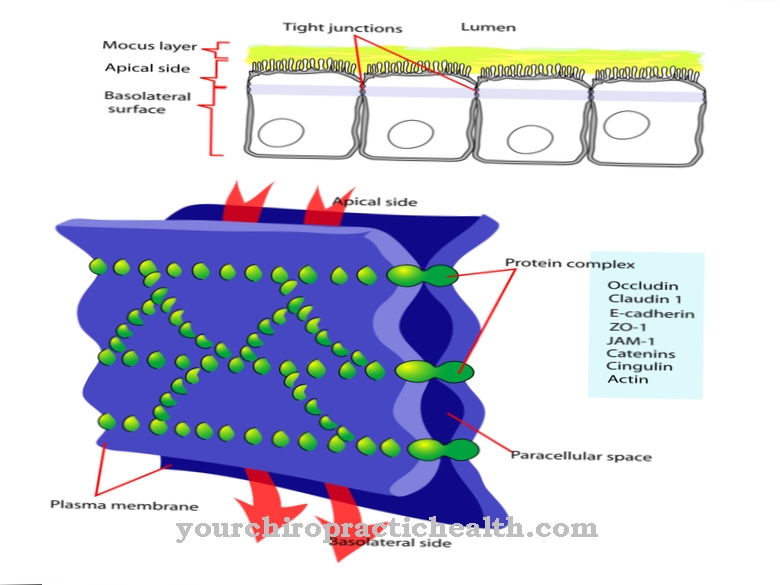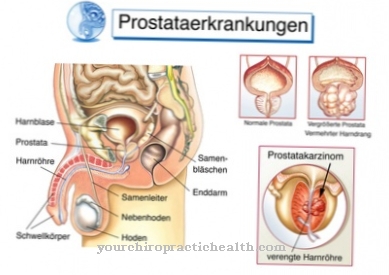In the Promyelocytic leukemia it is an acute form of leukemia caused by neoplasia in the red bone marrow. This leads to an uncontrolled increase in promyelocytes, an immature precursor of white blood cells, leukocytes. Treatment and mean survival chances of promyelocytic leukemia are still considered poor.
What is Promyelocytic Leukemia?

© StudioLaMagica - stock.adobe.com
The Promyelocytic leukemia, PML, represents a special form of acute myeloid leukemia, AML. It is characterized by the fact that more immature white blood cells can be detected in the bloodstream. Promyelocytes are bone marrow cells that are not normally found in the blood.
In PML, however, this cell type is excessively formed in the bone marrow and released into the free bloodstream for reasons that are not yet clear. This form of neoplasm is characterized by a very specific, characteristic shape of immature white blood cells, also called blasts.
Promyelocytic leukemia only accounts for about five percent of all new diagnoses of acute myeloid leukemia, so this form of leukemia is rare. When the PML outbreak, ethnic and regional frequencies can be determined, for which, however, there is still no plausible explanation.
Mostly adolescents and young adults are affected, because after the age of 60 the incidence rate decreases significantly. Promyelocytic leukemia affects women and men more or less equally.
causes
A clear assignment of the cause for the development and outbreak of promyelocytic leukemia is still not known. A higher incidence can be observed in Central and South America, Italy and Spain, for which the reason is also unknown. However, there are indications of so-called chromosomal aberrations, which could be directly involved in the development of promyelocytic leukemia.
The presence of a certain chromosome translocation or the corresponding fusion gene is considered to be diagnostic. In addition, other molecular variants were found, which, however, occur even more rarely. However, these typical chromosomal changes do not occur in all patients with promyelocytic leukemia.
Therefore, this is also insufficient as the sole criterion for determining the cause. The theory of an increased familial accumulation of the clinical picture has meanwhile been rejected again. The development of PML always begins in the red bone marrow, where independent, autonomous clones develop, which produce immature white blood cells in an uncontrolled manner, i.e. typical of a malignant tumor cell.
Symptoms, ailments & signs
Promyelocytic leukemia is a form of acutely occurring leukemia and is therefore always a hematological emergency that requires immediate medical intervention. Due to the neoplasia of immature white blood cells in the bone marrow, the production of thrombocytes, blood platelets, is largely suppressed.
This is why there is an increased tendency to bleed early on as the most important diagnostic criterion. This bleeding tendency is also regularly associated with a pronounced blood clotting disorder. Externally, these signs of the disease are already recognizable by the finest, punctiform hemorrhages in the skin and mucous membranes, also known as petechiae.
This is why there is a risk to life, even with the smallest injuries, from insatiable bleeding. However, the greater risk for patients with promyelocytic leukemia comes from internal, especially intracerebral bleeding, which is also a direct result of the increased bleeding tendency.
If specific therapeutic measures are not implemented immediately, the lives of those affected can usually not be saved. In the early stages of the disease, long before there is a visible bleeding tendency, the focus is on non-specific symptoms. These include, for example, pronounced paleness due to anemia, decreased performance and tiredness.
Diagnosis & course of disease
A reliable diagnosis of promyelocytic leukemia must be made in the haematological laboratory with the assistance of a specialist. A light microscope shows a characteristic leukemic picture with massive occurrences of promyelocytes in the peripheral blood.
Biopsies of the bone marrow as well as human genetic and coagulation physiological examinations can confirm the diagnosis at an early stage. The course of the disease is considered poor, as it is a severe clinical picture with a significantly reduced general condition.
Complications
First and foremost, promyelocytic leukemia leads to a significantly increased bleeding tendency in those affected. Even minor accidents or cuts lead to profuse bleeding. The blood coagulation itself is also clearly disturbed in most cases by promyelocytic leukemia, so that the bleeding cannot be easily stopped. As a rule, even minor bleeding can endanger life if the bleeding cannot be stopped.
Internal bleeding can also occur due to promyelocytic leukemia and lead to serious complications and symptoms. Those affected often suffer from exhaustion and tiredness, which, however, cannot be compensated with the help of sleep. Permanent paleness also occurs due to promyelocytic leukemia and the resilience of those affected decreases significantly due to the disease.
The treatment of promyelocytic leukemia is usually done with the help of drugs. There are no complications if the drug is not overdosed. Furthermore, there is also a positive course of the disease. However, whether the life expectancy of the person affected is reduced by promyelocytic leukemia can usually not be predicted.
When should you go to the doctor?
An increased tendency to bleed is to be understood as an alarm signal for the organism. If even minor injuries cannot be stopped with the usual methods of hemostasis, increased vigilance is required. A doctor should be visited as soon as possible, since promyelocytic leukemia leads to premature death of the patient if the disease progresses poorly. Timely and comprehensive medical care is essential in dealing with the disease. This also includes early diagnosis and a visit to the doctor at the first signs of a health problem.
In addition, there is a risk of sepsis and thus blood poisoning with open wounds. A pale complexion, rapid exhaustion and increased tiredness are signs of a disorder. If the symptoms appear suddenly or if they develop slowly, a doctor is needed. If there is an increasing need for sleep, apathy or indifference, there is a need for action. If there are changes in behavior, if leisure activities are reduced or if there is a lack of interest, a doctor should be consulted.
Disturbances in attention or concentration are worrying. They indicate a health irregularity that needs to be investigated and treated. A mental or physical decline in the normal level of performance must be discussed with a doctor. A decrease in resilience or an increase in the experience of stress are indications that should be followed up.
Treatment & Therapy
A causal, i.e. cause-related treatment of promyelocytic leukemia has not yet been possible. All elements of therapy focus on stopping the autonomic neoplasia of immature white blood cells in the bone marrow. For this purpose, high-dose chemotherapy with so-called anthracyclines is initially carried out.
However, since the patients are in mortal danger due to their increased bleeding tendency, substitution therapy with coagulation factors must take place in parallel. To increase the platelet count, selective platelet concentrates are also administered intravenously. Newer treatment strategies result from the administration of all-trans retinoic acid, ATRA, which is a derivative of vitamin A acid.
This substance, which is not a chemotherapeutic agent, acts on a molecular level and induces the maturation of immature blasts into mature and functional white blood cells, neutrophils. In addition to high-dose chemotherapy and treatment with ATRA, arsenic compounds are always included in the treatment concept.
The antileukemic efficacy of certain arsenic molecules in the treatment of acute leukemia is well documented. However, because of the enormous toxicity of arsenic as a heavy metal, any form of overdose must be strictly avoided.
prevention
If a patient has survived five years after the initial diagnosis of promyelocytic leukemia, the recurrence rate is surprisingly low compared to other bone marrow neoplasms. Close controls of blood counts and coagulation values are essential. There is no direct prevention against the occurrence of promyelocytic leukemia.
Healthy middle-aged patients can, however, be advised to have their blood count checked regularly as part of preventive medical checkups. Leukemic changes would be noticed early on, even if there were no symptoms.
Aftercare
Long-term patient monitoring is recommended after treatment of promyelocytic leukemia. Follow-up care lasts for at least ten years. During this time, the patients are examined once a year for control purposes. The follow-up examinations focus on the determination of a late recurrence.
The term refers to a recurrence of the disease a few years after treatment. A recurrence of promyelocytic leukemia after successful therapy is very rare for a period of up to five years. However, there have been isolated cases of late recurrences after more than ten years. This explains the long period of follow-up examinations.
With the regular check-ups, late effects of the therapy can be recorded and the occurrence of secondary leukemia or other malignant tumors can be determined. Part of follow-up care for patients with promyelocytic leukemia is regular bone marrow examinations every three months for a period of 12 to 18 months.
The duration of follow-up depends on whether the patients are classified as standard risk patients or high risk patients. The aim of this follow-up examination is to detect any residual leukemia cells that may have remained in the body. A relapse can be detected and treated early with early therapy if the result is positive.
You can do that yourself
Promyelocytic leukemia has a good prognosis if treated appropriately. The help of the patient is very important for this. In consultation with the doctor, the patient should be treated in a specialized leukemia center. There, all known complications can either be prevented or treated quickly by certain measures. In order to detect leukemia in good time, the patient should definitely consult a doctor in the event of unclear symptoms such as permanent extreme fatigue, pale skin, fever, constant abdominal pain, increased bleeding tendency, bruises, swollen lymph nodes, joint pain and other strange changes. This enables therapy to be started more quickly.
The patient can also contact self-help groups, the Deutsche Krebshilfe e.V. or the Deutsche Leukämie- und Lymphom-Hilfe e. V. provide extensive information and thereby also reduce fears. Many patients benefit from membership in a self-help group, where various experiences in dealing with the disease are exchanged. This is a great relief for many sufferers. The certainty that a cure is possible can additionally accelerate the healing process. But even in more severe cases, this exchange can have a very positive influence on the quality of life.
Taking advantage of psychological counseling often helps to prevent depression and other psychological sequelae of leukemia. Despite a serious illness, a healthy lifestyle with a balanced diet and stay in the fresh air also supports recovery.



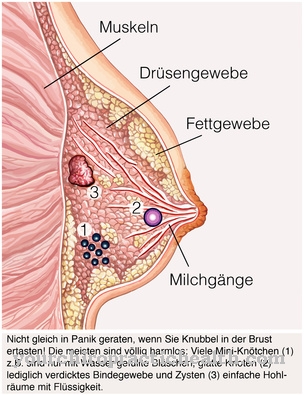
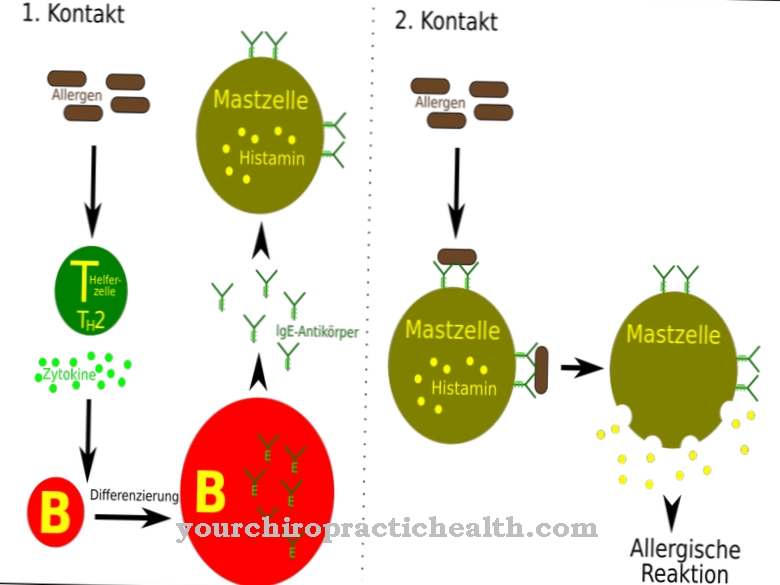
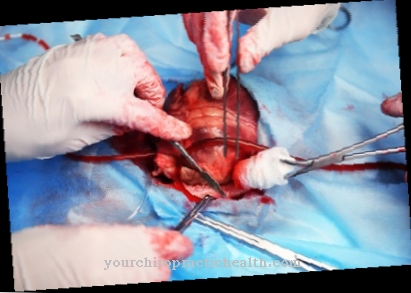


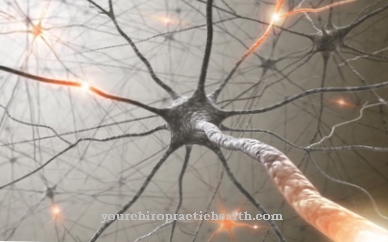
.jpg)

.jpg)





.jpg)





